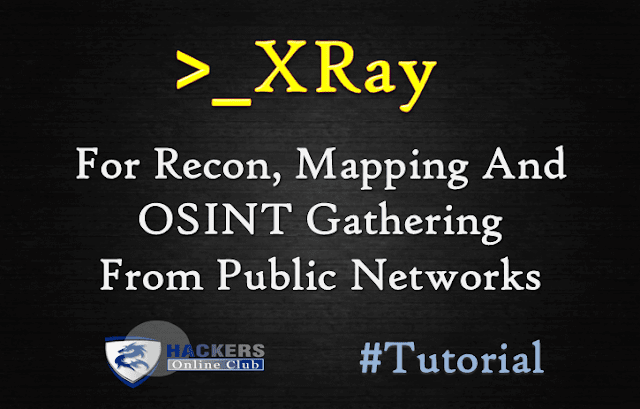XRay is a software for recon, mapping and OSINT gathering from public networks.
XRay for network OSINT gathering, its goal is to make some of the initial tasks of information gathering and network mapping automatic.
How Does it Work?
XRay is a very simple tool, it works this way:
- It’ll bruteforce subdomains using a wordlist and DNS requests.
- For every subdomain/ip found, it’ll use Shodan to gather open ports and other intel.
- If a ViewDNS API key is provided, for every subdomain historical data will be collected.
- For every unique IP address, and for every open port, it’ll launch specific banner grabbers and info collectors.
- Eventually the data is presented to the user on the web ui.
Grabbers and Collectors
- HTTP Server, X-Powered-By and Location headers.
- HTTP and HTTPS robots.txt disallowed entries.
- HTTPS certificates chain ( with recursive subdomain grabbing from CN and Alt Names ).
- HTML title tag.
- DNS version.bind. and hostname.bind. records.
- MySQL, SMTP, FTP, SSH, POP and IRC banners.
Notes
Shodan API Key
The shodan.io API key parameter ( -shodan-key KEY ) is optional, however if not specified, no service fingerprinting will be performed and a lot less information will be shown (basically it just gonna be DNS subdomain enumeration).
ViewDNS API Key
If a ViewDNS API key parameter ( -viewdns-key KEY ) is passed, domain historical data will also be retrieved.
Anonymity and Legal Issues
The software will rely on your main DNS resolver in order to enumerate subdomains, also, several connections might be directly established from your host to the computers of the network you’re scanning in order to grab banners from open ports. Technically, you’re just connecting to public addresses with open ports (and there’s no port scanning involved, as such information is grabbed indirectly using Shodan API), but you know, someone might not like such behaviour.
Building a Docker image
To build a Docker image with the latest version of XRay:
git clone https://github.com/evilsocket/xray.git
cd xray
docker build -t xraydocker .
Once built, XRay can be started within a Docker container using the following:
docker run –rm -it -p 8080:8080 xraydocker xray -address 0.0.0.0 -shodan-key shodan_key_here -domain example.com
Manual Compilation
Make sure you are using Go >= 1.7, that your installation is working properly, that you have set the $GOPATH variable and you have appended $GOPATH/bin to your $PATH.
Then:
go get github.com/evilsocket/xray
cd $GOPATH/src/github.com/evilsocket/xray/
make
You’ll find the executable in the build folder.
Usage
Usage: xray -shodan-key YOUR_SHODAN_API_KEY -domain TARGET_DOMAIN
Options:
-address string
IP address to bind the web ui server to. (default “127.0.0.1”)
-consumers int
Number of concurrent consumers to use for subdomain enumeration. (default 16)
-domain string
Base domain to start enumeration from.
-port int
TCP port to bind the web ui server to. (default 8080)
-preserve-domain
Do not remove subdomain from the provided domain name.
-session string
Session file name. (default “
-shodan-key string
Shodan API key.
-viewdns-key string
ViewDNS API key.
-wordlist string
Wordlist file to use for enumeration. (default “wordlists/default.lst”)
Example:
# xray -shodan-key yadayadayadapicaboo… -viewdns-key foobarsomethingsomething… -domain fbi.gov
____ ___
/ /
RAY v 1.0.0b
/ by Simone ‘evilsocket’ Margaritelli
/___/
_/
@ Saving session to fbi.gov-xray-session.json
@ Web UI running on http://127.0.0.1:8080/


